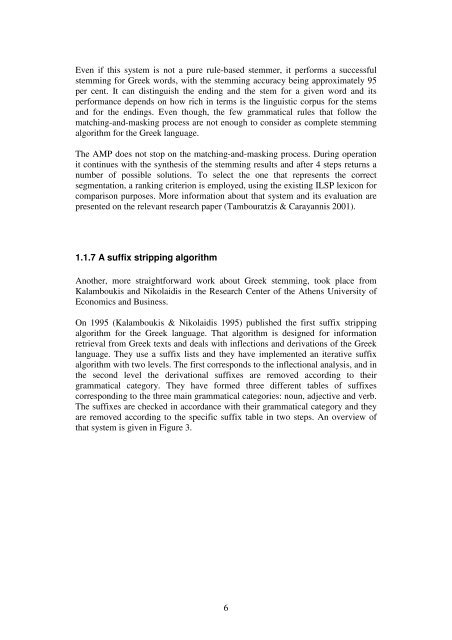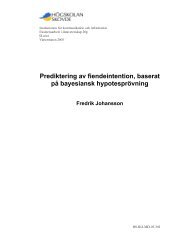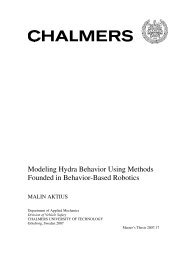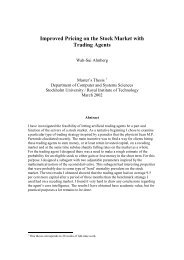Development of a Stemmer for the Greek Language - SAIS
Development of a Stemmer for the Greek Language - SAIS
Development of a Stemmer for the Greek Language - SAIS
You also want an ePaper? Increase the reach of your titles
YUMPU automatically turns print PDFs into web optimized ePapers that Google loves.
Even if this system is not a pure rule-based stemmer, it per<strong>for</strong>ms a successful<br />
stemming <strong>for</strong> <strong>Greek</strong> words, with <strong>the</strong> stemming accuracy being approximately 95<br />
per cent. It can distinguish <strong>the</strong> ending and <strong>the</strong> stem <strong>for</strong> a given word and its<br />
per<strong>for</strong>mance depends on how rich in terms is <strong>the</strong> linguistic corpus <strong>for</strong> <strong>the</strong> stems<br />
and <strong>for</strong> <strong>the</strong> endings. Even though, <strong>the</strong> few grammatical rules that follow <strong>the</strong><br />
matching-and-masking process are not enough to consider as complete stemming<br />
algorithm <strong>for</strong> <strong>the</strong> <strong>Greek</strong> language.<br />
The AMP does not stop on <strong>the</strong> matching-and-masking process. During operation<br />
it continues with <strong>the</strong> syn<strong>the</strong>sis <strong>of</strong> <strong>the</strong> stemming results and after 4 steps returns a<br />
number <strong>of</strong> possible solutions. To select <strong>the</strong> one that represents <strong>the</strong> correct<br />
segmentation, a ranking criterion is employed, using <strong>the</strong> existing ILSP lexicon <strong>for</strong><br />
comparison purposes. More in<strong>for</strong>mation about that system and its evaluation are<br />
presented on <strong>the</strong> relevant research paper (Tambouratzis & Carayannis 2001).<br />
1.1.7 A suffix stripping algorithm<br />
Ano<strong>the</strong>r, more straight<strong>for</strong>ward work about <strong>Greek</strong> stemming, took place from<br />
Kalamboukis and Nikolaidis in <strong>the</strong> Research Center <strong>of</strong> <strong>the</strong> A<strong>the</strong>ns University <strong>of</strong><br />
Economics and Business.<br />
On 1995 (Kalamboukis & Nikolaidis 1995) published <strong>the</strong> first suffix stripping<br />
algorithm <strong>for</strong> <strong>the</strong> <strong>Greek</strong> language. That algorithm is designed <strong>for</strong> in<strong>for</strong>mation<br />
retrieval from <strong>Greek</strong> texts and deals with inflections and derivations <strong>of</strong> <strong>the</strong> <strong>Greek</strong><br />
language. They use a suffix lists and <strong>the</strong>y have implemented an iterative suffix<br />
algorithm with two levels. The first corresponds to <strong>the</strong> inflectional analysis, and in<br />
<strong>the</strong> second level <strong>the</strong> derivational suffixes are removed according to <strong>the</strong>ir<br />
grammatical category. They have <strong>for</strong>med three different tables <strong>of</strong> suffixes<br />
corresponding to <strong>the</strong> three main grammatical categories: noun, adjective and verb.<br />
The suffixes are checked in accordance with <strong>the</strong>ir grammatical category and <strong>the</strong>y<br />
are removed according to <strong>the</strong> specific suffix table in two steps. An overview <strong>of</strong><br />
that system is given in Figure 3.<br />
6





